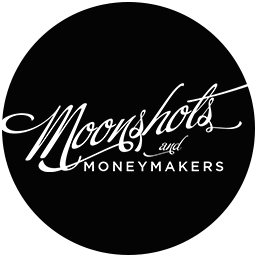
Busting a common myth about start-up progression.
When you’re first starting out as a small business entrepreneur, you don’t always know what to expect.
Especially when it comes to your own growth.
There’s a common myth in place regarding the progress of start-ups, says Howard Love, a founder of lovetoknow.com and flexjobs.com, and author of The Start-Up J-Curve. The myth says that if you were to track your progress on a graph, you would end up with a straight line heading from the bottom-left to the top-right of the graph (with, if you’re lucky, a nice little hockey stick at the end.)
The myth goes that once you have a really great idea and start a business based on it, that business will just continue to grow and you’ll progress in a linear fashion until you decide to sell.
That is rarely the case.
“In my experience, that hardly ever happens,” Howard explains. As founder or co-founder of about 15 different companies and angel investor of 50+ others, Howard has spent a lot of time watching small businesses grow. In The Start-Up J-Curve, he divides the typical start-up path into six different phases, each with their own pattern of growth. Let’s take a look.
The 6 Phases of the Start-Up J-Curve
Phase 1: Create. In this phase, you’ve come up with that great idea that’s going to disrupt your industry and make you millions of dollars. It’s a heady, exciting time – you’re giddy, you’re optimistic, you’re putting together the team and the money, and you’re starting to build your initial product. But chances are, you’ve run into some issues: maybe it was hard to get some of the people you needed, maybe there were issues with permits, maybe you’ve had to spend more money than you anticipated. As Howard points out: “It’s taking more money, it’s taking more time, and so forth. So, emotionally and from a value perspective, you’re dropping down.”
Phase 2: Release. Chances are, you will not be making much headway in this stage either. You’ve finally gotten your product out there, but it always takes longer than you think it will. There are always practical and psychological hurdles to getting the product out. And once it does, it usually lands with a thud. “Almost always, the first iteration of the product does not work. It just doesn’t resonate,” Howard says. “And that’s just devastating and disappointing.” That setback leads directly to the next phase.
Phase 3: Morph. This phase involves figuring out what works and doesn’t work with the product. “There’s always a glimmer of hope, something that somebody likes,” Howard points out. “You move the product towards that, and you fade the things that are not working. You iterate so that by the end of it, you end up with a product that people love.” Once you have a product that resonates and attracts consumers, your curve finally starts to move upward.
Phase 4: Model. It’s at this point that you start to figure out how you’ll make money with your product. “The goal of this phase is to nail the business model,” Howard advises. This period is about ensuring eventual cash flow, driving down your costs, and maximizing your revenue. If you do it right, this phase is the one that really drives your progress onto that coveted upward trajectory.
Phase 5: Scale. “First you nail it, then you scale it,” Howard affirms. “The Scale phase is when you really blow your product out. Focus on the three things you need here, which are people, process, and money.” This can be a tricky stage psychologically, as you have to get out of the small company mindset and really take things to the next level. It’s a time of major change, but can be the most rewarding stage financially.
Phase 6: Harvest. This phase marks the crossover from start-up to established business, and it’s time for you to figure out what to do with the money you’re making. “This is the phase where you have what I call puffball decisions, involving new acquisitions, stock buybacks, IPO, liquidity, events, and all of these other wonderful things,” says Howard. It’s in this phase and the Scale phase that the real value creation happens.
As you can see, the path of a start-up isn’t as straightforward as the myth would have you believe. But if you can anticipate the typical dips and growth periods, you’ll be more prepared for the challenges you’ll be facing.


